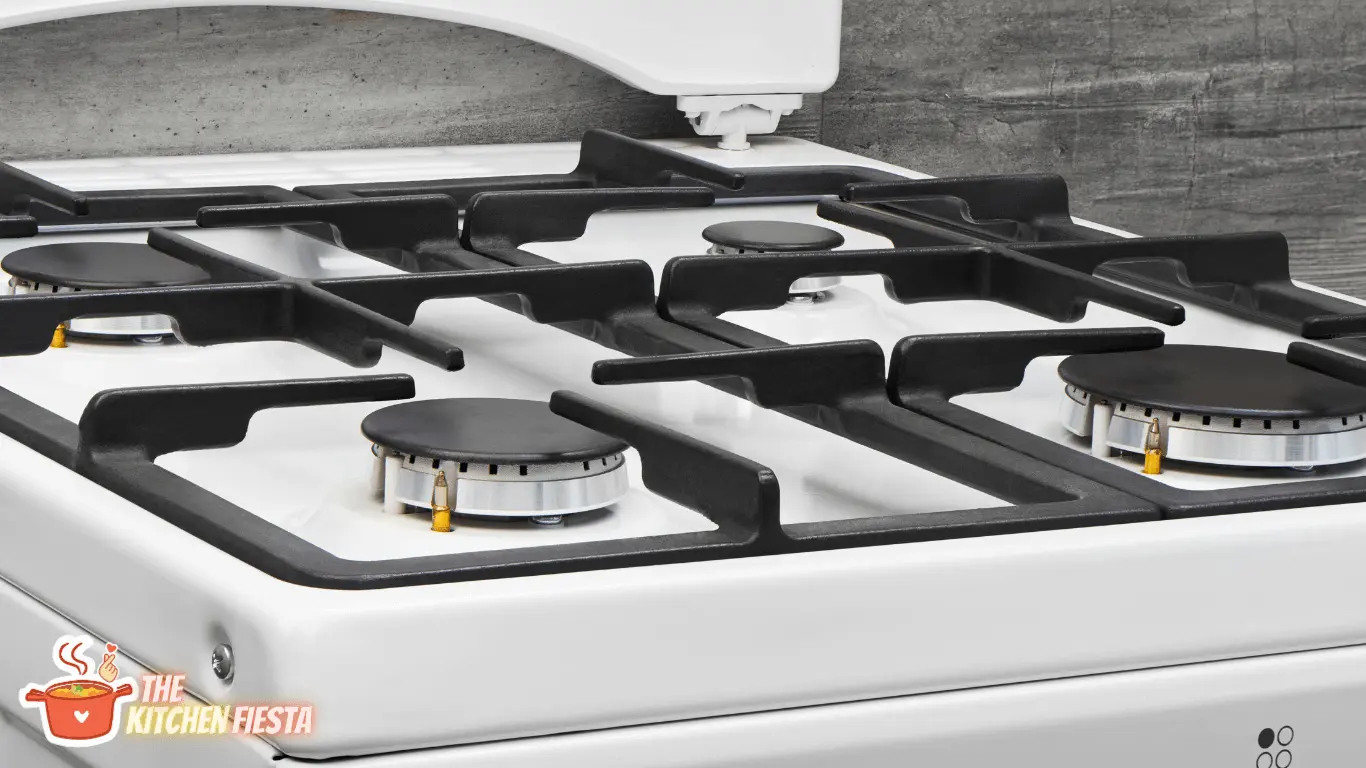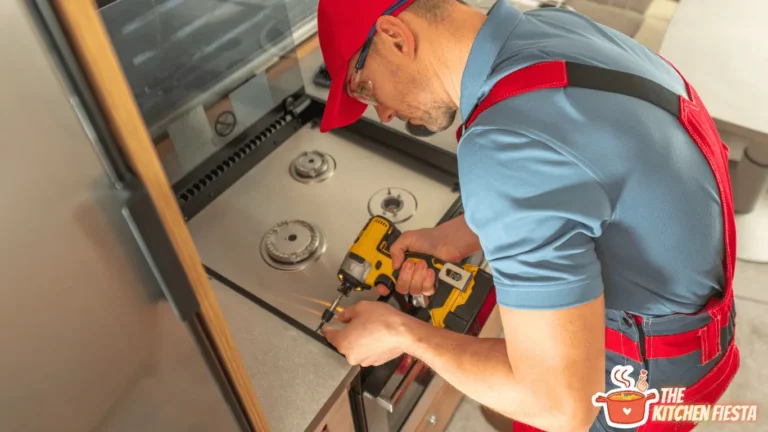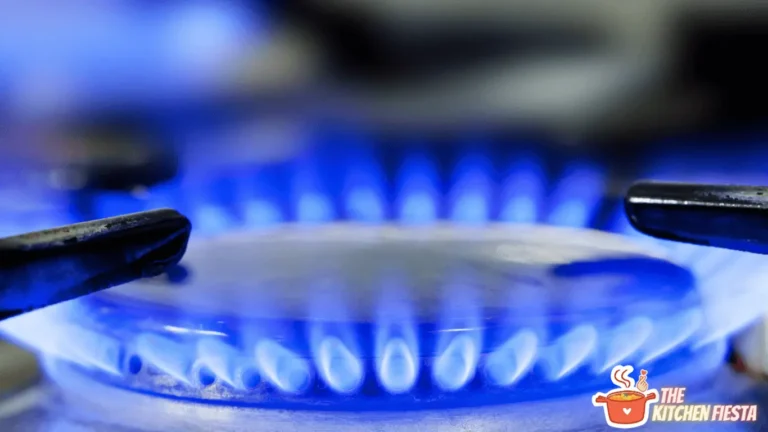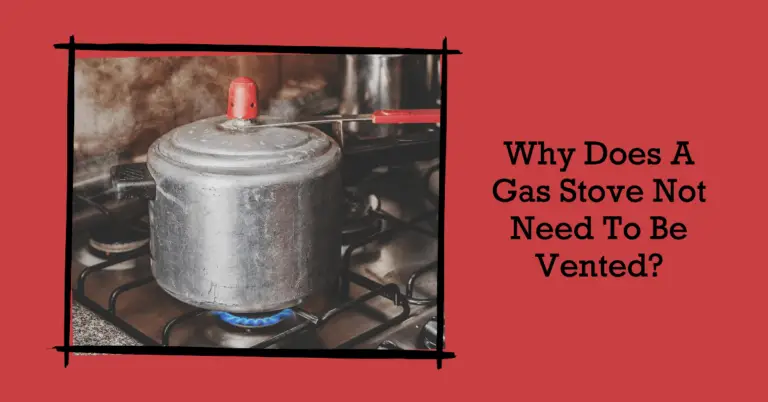left gas stove on for 5 hours: What To Do?

It’s a familiar routine – you finish cooking dinner on your gas stove, turn off the burner, and go about your evening. But what if you accidentally left the gas stove on without turning off the burner? This dangerous oversight could lead to a gas leak or carbon monoxide poisoning if you leave the house with the stove still on.
So what should you do if you realize you may have left your gas stove on without a flame? How can you stay safe if you suspect the gas was left on? This guide will walk through the warning signs, emergency response steps, and prevention tips you need to know if you’ve accidentally left the gas stove on.
Why Leaving a Gas Stove On Without a Flame is Extremely Dangerous?
Gas stoves are powered by natural gas or propane and require the gas to be ignited by a pilot light or spark to power the burner. If gas is released but not lit, it can build up inside your home and cause a deadly disaster.
There are two major risks if you accidentally leave the gas stove on without lighting the burner:
- Gas leak: Unburned gas can collect in the air and potentially lead to an explosion if ignited by a spark or flame. Inhaling the natural gas fumes can also cause suffocation.
- Carbon monoxide poisoning: The invisible, odorless gas carbon monoxide is produced any time a gas appliance like a stove or oven is not properly burned. Carbon monoxide can quickly build up to toxic levels and poison or kill occupants.
That’s why it’s critical to take immediate action if you ever suspect you may have forgotten to turn off your gas stove. The consequences could be fatal.
Telltale Signs You Have Left the Gas Stove On
How can you tell if you left the gas stove on by accident after cooking? Here are some of the most common signs that the stove was not properly turned off:
- You smell the distinctive rotten egg odor of natural gas. Most utility companies add a sulfur scent to the gas to make leaks detectable. Any gas smell means you likely have a dangerous situation.
- The stove’s pilot lights are on but the burners have no flame. This shows gas is flowing but not being combusted.
- The knobs on your gas stove are turned to the on position but you have no recollection of lighting the burner.
- You notice the stove top or oven area is warmer than expected if unused. Excess gas flow can slightly warm the appliance.
- You feel lightheaded, nauseous, or dizzy, possible symptoms of early carbon monoxide exposure.
If you observe any of these warning signs, assume the stove was left on and act quickly. Never ignore the signs of a possible gas leak or carbon monoxide buildup.
Immediate Steps to Take if the Gas Stove Was Left On
If you suspect your gas stove was accidentally left on without the burner lit, here are the crucial steps to take right away:
- Don’t turn on any lights or electronic devices. Any spark could ignite the gas.
- Open doors and windows to maximize ventilation and allow gas to dissipate. Avoid excessive fanning which could spread the gas.
- Leave the house immediately and call 911 once outside. Let professionals inspect for safety.
- Call your utility company’s gas emergency number to cut off gas supply to the house.
- Do not try to locate or stop the leak yourself. Gas can explode if ignited.
- Don’t re-enter the home until emergency responders say it’s safe. Lingering gas could still explode.
Getting out of the house and cutting off the gas supply are the two most important actions. Never risk staying inside a home flooded with unburned natural gas.
How to Safely Turn Off a Gas Stove Left On?
Ideally you should always have gas professionals turn off an unattended gas stove that was accidentally left on. But if you must turn off the appliance yourself, proceed with extreme care:
- Do not turn on any lights, electronics, or devices before shutting off the gas. Avoid all sparks.
- Open all doors and windows to ventilate before going inside.
- Approach the stove area from a distance while avoiding lowering your head into the gas.
- Hold your breath as you reach for the knobs to minimize inhaling fumes.
- Quickly turn the knobs to the off position.
- Evacuate immediately and ventilate the house again by opening doors and windows.
- Call the gas company and emergency services before re-entering again. Never assume you’ve solved the problem yourself. Gas can still leak even after shutting off the stove. Professionals need to check that all gas appliances are safe, identify leaks, and turn the main gas back on once it’s resolved.
Never take risks with a gas leak. It’s always safest to leave the home and let experts assess and handle a stove that was accidentally left on.
Preventing Gas Stove Accidents
The best approach is taking precautions so you never have to worry about whether you left the gas stove on after cooking. Here are key prevention tips:
- Install gas leak and carbon monoxide detectors. They can alert you to growing hazards.
- Use stove knobs with automatic shut-off features. Many new models automatically turn off the gas if not lit after a certain time period.
- Develop a habit of checking all knobs before leaving the kitchen. Get in the routine of confirming they are off.
- Consider electric ignition stoves that require manually lighting each burner. It’s harder to accidentally leave gas flowing on an electric ignition stove.
- Replace old stoves with modern, safer models. Newer appliances have more precautions and warnings.
- Never leave cooking food unattended on the stove. Stay vigilant until the burner is confirmed off.
- If you have a gas oven, open the oven door fully before turning it on to allow gas to vent and avoid buildup.
Following sensible precautions like these can help avoid safety scares related to your gas stove.
Responding to the Smell of Gas in Your Home
If you ever detect the sour smell of natural gas in your kitchen or home, here are the steps to take:
- Evacuate everyone immediately and call 911 and your gas company once outside. Never assume it’s a small leak.
- Don’t turn on any lights, electronics, or appliances in the home as you exit. All could produce sparks.
- Don’t try to locate the leak or stop it yourself. This is extremely dangerous.
- Let professionals inspect for leaks, repair problems, and confirm it’s safe before re-entering.
- Open windows once outside to allow the gas odor to vent. Don’t excessively fan or spread the gas.
- Have a qualified technician check all gas appliances like your stove, furnace, water heater, etc. There could be problems with multiple units.
Trust your nose – if you ever smell even a hint of gas, treat it as an emergency and get everyone out of the building immediately. Never ignore the telltale rotten egg scent associated with natural gas leaks.
Recognizing Symptoms of Carbon Monoxide Poisoning
One of the dangers of leaving a gas stove on without lighting the burner is the buildup of toxic carbon monoxide gas. This odorless threat can rapidly overwhelm someone before they even recognize the effects.
Be alert for the following carbon monoxide poisoning symptoms:
- Headache, dizziness, nausea, fatigue, chest pain.
- Impaired thinking and confusion. Inability to concentrate.
- Shortness of breath. Fast heart rate and breathing rate.
- Red or pink skin coloration.
- Unusual clumsiness or fainting.
- Pets displaying similar symptoms.
If you or any occupant exhibits symptoms of carbon monoxide exposure, evacuate the building and seek medical attention immediately. Never ignore or downplay these critical warning signs.
Ensuring Your Home is Gas-Safe Again After an Incident
After a gas leak incident or suspected carbon monoxide exposure, you’ll need to take proactive steps to ensure your home is gas-safe again:
- Have certified gas appliance technicians do a complete inspection and repairs. All gas units need to be examined and issues resolved before you reoccupy the space.
- Some appliances may require repairs or full replacement if damaged. You can’t risk using compromised gas equipment.
- Technicians will check the gas lines and meters for damage or leaks. Any breach needs to be found and sealed.
- Ventilation systems may need to be installed or upgraded. You need good air circulation where you have gas appliances.
- Gas companies need to do a full diagnostic and reset your system prior to turning your household gas back on.
Don’t attempt to resume using your gas stove or other appliances until everything has been thoroughly checked by licensed professionals. Safety comes first when dealing with natural gas.
FAQs About Gas Stove Safety
Can I smell a gas leak from my stove?
Yes, utility providers add a “rotten egg” smell to natural gas so that leaks can be detected. If you ever smell sulfur or rotten eggs near your gas stove, evacuate immediately and call the gas company.
Is it OK to leave a gas stove on while I run errands?
Never leave a gas stove burning or turned on when not at home. Unattended stoves can lead to fires, explosions, or carbon monoxide poisoning. Always confirm all knobs are off.
Are gas stoves safe for homes with children?
Gas stoves can be safe with kids but require precautions like knob covers, teaching children to stay away, and never leaving children unattended near an active stove. Many families install electric ignition stoves for added child safety.
What temperature is dangerous for a gas stove?
Gas stoves should never exceed the maximum BTU rating for each burner. Temperatures above 500-600°F can risk fire or damage. Standard burners don’t require extremely high heat.
Can a gas stove explode?
Yes, if enough unburned gas builds up, a gas stove could potentially explode and put lives at risk. Any uncontrolled gas leak near a flame or spark source could cause an explosion.
Knowing the risks, prevention tips, and emergency response steps for gas stove safety empowers you to cook safely and avoid disaster. Be vigilant when operating your gas appliance and know what to do if you ever smell gas or suspect the stove was left on. Following smart gas safety practices can keep your family secure.






